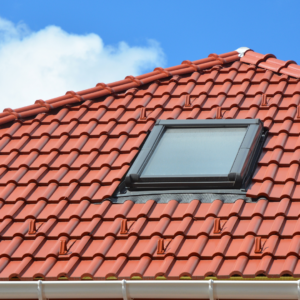As a homeowner, ensuring your roof can withstand fire hazards is crucial for both safety and financial stability, especially with the threat of wildfires in areas like Colorado. This guide on the best fire resistant roofing materials for homeowners will help you make an informed decision to protect your property and reduce insurance claims.
The best fire resistant roofing materials for homeowners are clay tiles, concrete tiles, metal roofing, slate, and fiberglass-asphalt shingles. Each material offers varying degrees of fire resistance, durability, and aesthetic appeal, making them excellent choices for fire prevention and home safety.
- Why Fire Resistant Roofing Materials Matter
- Clay Tiles: Traditional Beauty and Superior Fire Resistance
- Concrete Tiles: Robust Protection for Your Roof
- Metal Roofing: Modern Solution for Fire Safety
- Slate: Natural Elegance with High Fire Resistance
- Fiberglass-Asphalt Shingles: Affordable Fire Protection
- Choosing the Best Fire Resistant Roofing Materials for Your Home
- Installation and Maintenance Tips for Fire Resistant Roofing
- Protect Your Home with the Best Fire Resistant Roofing Materials
Key Takeaways
- Investing in fire resistant roofing materials can lower your insurance premiums, reduce repair costs, and increase your home’s overall safety and value.
- Clay tiles offer excellent fire resistance, long-term durability, and aesthetic appeal, though they require a robust roofing structure.
- Concrete tiles provide strong fire resistance and durability, with a versatile design, but may require additional structural support due to their weight.
- Metal roofing combines excellent fire resistance with durability and energy efficiency, making it a modern, long-lasting choice.
- Slate offers superior fire resistance and longevity, providing a natural, elegant look, though it is heavier and more expensive.
- Fiberglass-asphalt shingles offer a cost-effective fire resistant option with decent protection and ease of installation.
- Assess your budget, aesthetic preferences, and specific home needs to select the best fire resistant roofing materials, enhancing your home’s safety and value.
- Proper installation and regular maintenance of fire resistant roofing materials ensure optimal performance and long-term fire protection.
Keep reading to discover the detailed benefits of these materials, their cost-effectiveness, and how they can enhance your home’s safety. Understanding these options will help you make the best decision for your roofing needs.
Why Fire Resistant Roofing Materials Matter
Wildfires are a significant threat to homes, especially in wildfire-prone regions like Colorado. A recent study revealed a 246% increase in the number of homes and structures destroyed by wildfires in the contiguous Western U.S. between the decades of 1999-2009 and 2010-2020. Choosing the right roofing materials can significantly reduce the risk of fire damage, providing a safer environment for your family and potentially lowering your insurance premiums.
Fire resistant roofing materials not only safeguard your home but also offer peace of mind. Knowing that your roof can withstand high temperatures and flying embers is crucial in protecting your investment and ensuring long-term safety. Additionally, many insurance companies offer lower premiums for homes with fire-resistant roofs, making it a financially sound decision.
Clay Tiles: Traditional Beauty and Superior Fire Resistance
Clay tiles are a classic choice that offers excellent fire resistance. These tiles are non-combustible and can withstand high temperatures, making them an ideal option for fire-prone areas. In addition to their fire-resistant properties, clay tiles are known for their durability and long lifespan, often lasting up to 100 years with proper maintenance.
Clay tiles are also aesthetically pleasing, and available in various styles and colors to enhance your home’s curb appeal. However, they are heavy and require a robust roofing structure, which can increase installation costs.
Concrete Tiles: Robust Protection for Your Roof
Concrete tiles are another excellent choice for fire resistant roofing materials. Made from a mixture of sand, cement, and water, these tiles are non-combustible and highly durable. Concrete tiles can mimic the appearance of traditional clay tiles or even wood shakes, providing versatility in design while offering superior fire protection.
Concrete tiles are resistant to wind, hail, and other severe weather conditions, making them a durable option. They require minimal maintenance, saving you time and money in the long run. However, like clay tiles, they are heavy and may necessitate additional structural support during installation.
Metal Roofing: Modern Solution for Fire Safety
Metal roofing is increasingly popular due to its durability, energy efficiency, and excellent fire resistance. Materials such as aluminum, steel, and copper are non-combustible and can effectively protect your home from wildfires. Metal roofing is also lightweight, making it suitable for most roofing structures without the need for additional support.
Metal roofs can last between 40-70 years, resisting wind, rain, and hail. They also have reflective properties that help reduce cooling costs in hot climates. Although metal roofs can be more expensive upfront, their longevity and low maintenance can result in long-term savings.
Slate: Natural Elegance with High Fire Resistance
Slate roofing is one of the most durable and fire-resistant options available. This natural stone material is non-combustible and can withstand extreme temperatures. Slate roofs can last over 100 years, providing both fire protection and an elegant aesthetic for your home.
Slate offers a timeless, natural look that can enhance property value. However, it is one of the most expensive roofing materials and requires strong structural support due to its weight. Despite these drawbacks, the slate’s longevity and minimal maintenance make it a valuable investment.
Fiberglass-Asphalt Shingles: Affordable Fire Protection
Fiberglass-asphalt shingles are a popular and cost-effective choice for fire resistant roofing materials. These shingles have a fiberglass mat coated with asphalt and mineral granules, providing decent fire resistance at an affordable price. They are available in a variety of styles and colors, making them a versatile option for many homeowners.
Fiberglass-asphalt shingles offer good fire protection, meeting Class A fire ratings. They are relatively easy to install and replace, making them a convenient option. However, they have a shorter lifespan (20-30 years) compared to other materials and may not withstand severe weather as well.
Choosing the Best Fire Resistant Roofing Materials for Your Home
Selecting the best fire resistant roofing materials for homeowners involves considering factors like budget, aesthetic preferences, and specific home needs. Clay tiles, concrete tiles, metal roofing, slate, and fiberglass-asphalt shingles each offer unique benefits and drawbacks. Consulting with roofing professionals can help you determine the best option for your home, ensuring you receive expert advice tailored to your situation.
When choosing fire resistant roofing materials, it’s essential to assess your budget, the desired aesthetic, the durability of the material, and how well it performs in your local climate. Taking these factors into account will help you make a well-informed decision that enhances your home’s safety and value.
Installation and Maintenance Tips for Fire Resistant Roofing
Proper installation and maintenance are critical to maximizing the effectiveness of fire resistant roofing materials. Working with experienced roofing contractors ensures your roof is installed correctly and adheres to safety standards. Regular maintenance, such as cleaning gutters and inspecting for damage, helps maintain the roof’s fire-resistant properties.
Hiring professionals for installation is crucial to ensure compliance with local fire safety regulations and to use quality materials. Regular inspections, cleaning gutters to prevent fire hazards, and promptly repairing any damaged or missing shingles or tiles are essential maintenance practices.
Protect Your Home with the Best Fire Resistant Roofing Materials
Choosing the best fire resistant roofing materials for homeowners involves weighing the benefits and drawbacks of each option. By understanding the fire-resistant properties, cost, and maintenance requirements of these materials, you can make an informed decision that enhances your home’s safety and value.
Contact Just Roofs & Gutters today to get your online roof estimate in seconds. Our team of experts is ready to provide personalized advice and professional services to help you select and install the best fire resistant roofing materials for your home. Protect your investment and ensure your home’s safety with our reliable and efficient roofing solutions.
Are there any local building codes or regulations I should be aware of when installing fire resistant roofing materials?
Yes, local building codes and regulations often specify requirements for fire resistant roofing materials, especially in areas prone to wildfires. It’s crucial to check with your local building authority or a professional roofing contractor to ensure compliance with these codes. Adhering to local regulations not only enhances your home’s safety but also ensures your roofing installation meets legal standards, which can be important for insurance and resale purposes.
What are the environmental benefits of fire resistant roofing materials?
Fire resistant roofing materials often have additional environmental benefits. For instance, metal roofing and clay tiles are recyclable, reducing landfill waste. Some materials, like metal roofing, also reflect solar heat, improving energy efficiency and reducing cooling costs. Using durable, long-lasting materials means fewer replacements over time, which conserves resources and reduces environmental impact. Choosing eco-friendly fire resistant materials can help protect your home and the environment.
How do fire resistant roofing materials perform in other weather conditions, such as hail or heavy rain?
Fire resistant roofing materials are typically designed to withstand various weather conditions in addition to fire. For example, concrete and metal roofs are highly durable and can resist hail impact and heavy rain. Slate roofing is also known for its durability against severe weather. Fiberglass-asphalt shingles, while not as durable as other options, still offer good protection against wind and rain. When selecting fire resistant roofing, consider its overall performance in your local climate to ensure comprehensive protection.





